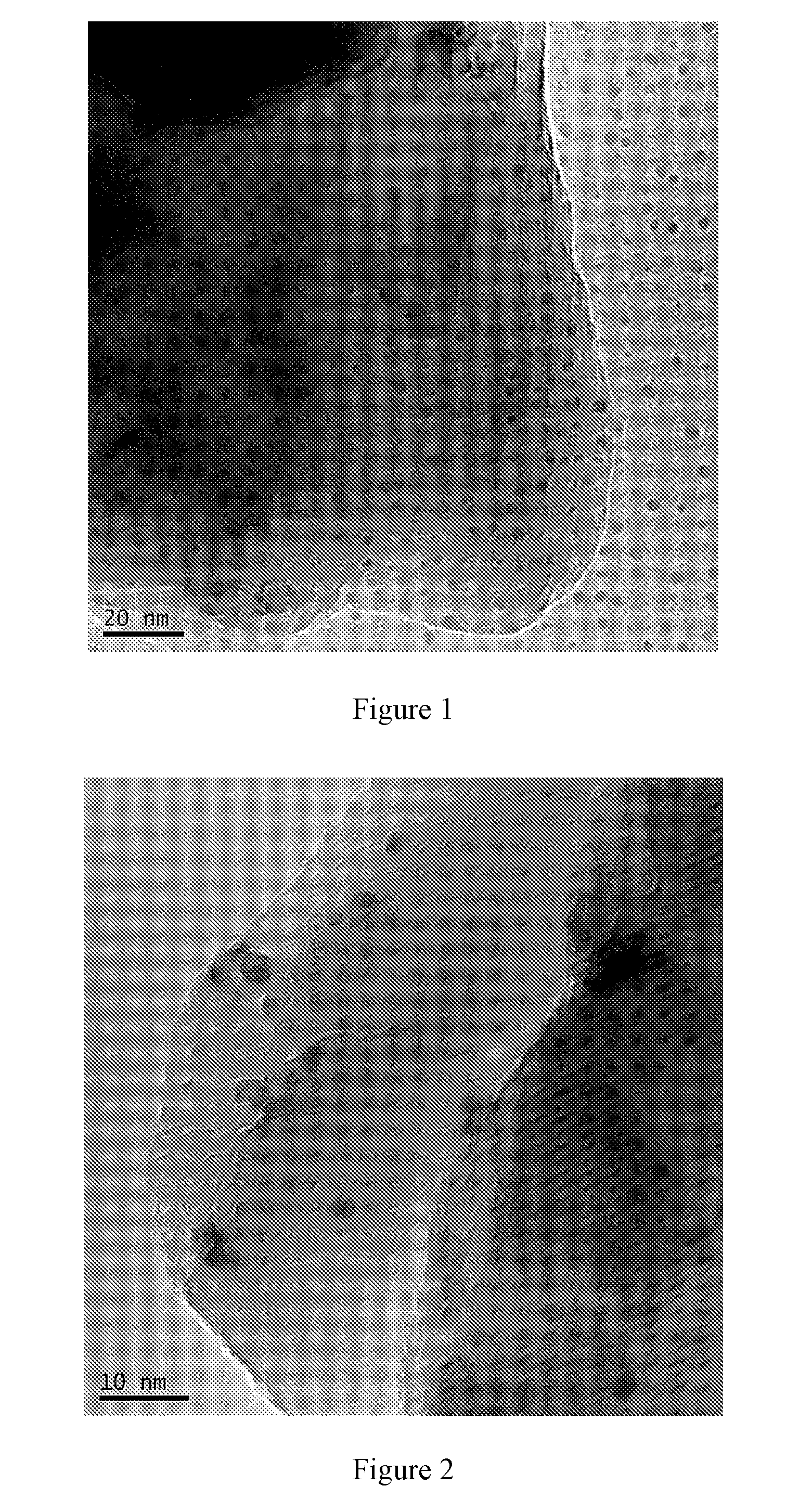A process for vapor-phase methanol carbonylation to methyl formate, a catalyst used in the process and a method for preparing the catalyst
a technology of methyl formate and methanol, which is applied in the direction of catalyst activation/preparation, physical/chemical process catalysts, metal/metal-oxide/metal-hydroxide catalysts, etc., can solve the problems of high energy consumption, large difficulty in practical operation, and the inability to apply dehydrogenation of methanol in large-scale industries. , to achieve the effect of low equipment investment, low purity requirements, and high conversion co and selectivity o
- Summary
- Abstract
- Description
- Claims
- Application Information
AI Technical Summary
Benefits of technology
Problems solved by technology
Method used
Image
Examples
example 1
Preparation of Catalyst 1
[0069]1 g of alumina was weighed, impregnated into 15 mL ethanol solution of 50 mmol / L CuCl2.2H2O, stood for 18 hours, dried at 100° C. for 15 hours, calcinated at 400° C. for 5 hours, then impregnated again into 1.25 mL aqueous solution of 37.6 mmol / L potassium chloropalladite, and 4 mL water was added, stirred for 3 hours, dispersed ultrasonically for 3 hours, dried at 120° C. for 15 hours, calcinated at 400° C. for 5 hours, added with 0.1 g of ascorbic acid, 0.2 g of citric acid and 0.5 g of polyvinylpyrrolidone, reduced at 90° C. for 1 hour, dried in vacuum at 60° C. for 15 hours, to obtain Pd—Cu / Al2O3 catalyst 1 used in the reaction of vapor-phase methanol carbonylation to methyl formate.
example 2
Preparation of Catalyst 2
[0070]1 g of alumina was weighed, impregnated into 15 mL ethanol solution of 50 mmol / L CuCl2.2H2O, stood for 18 hours, dried at 100° C. for 15 hours, calcinated at 400° C. for 5 hours, then impregnated again into 0.68 mL aqueous solution of 37.6 mmol / L chloroplatinic acid, and 4 mL water was added, stirred for 3 hours, dispersed ultrasonically for 3 hours, dried at 120° C. for 15 hours, calcinated at 400° C. for 5 hours, added with 0.1 g of ascorbic acid, 0.2 g of citric acid and 0.5 g of polyvinylpyrrolidone, reduced at 90° C. for 1 hour, dried in vacuum at 60° C. for 15 hours, to obtain Pd—Cu / Al2O3 catalyst 2 used in the reaction of vapor-phase methanol carbonylation to methyl formate.
example 3
Preparation of Catalyst 3
[0071]1 g of magnesia was weighed, impregnated into 17 mL ethanol solution of 50 mmol / L Ni(NO3)2.6H2O, stood for 18 hours, dried at 100° C. for 15 hours, calcinated at 400° C. for 5 hours, then impregnated again into 0.63 mL aqueous solution of 37.6 mmol / L potassium chloropalladite, and 4 mL water was added, stirred for 3 hours, dispersed ultrasonically for 3 hours, dried at 120° C. for 15 hours, calcinated at 400° C. for 5 hours, added with 0.1 mL formaldehyde, 0.24 g of sodium citrate and 0.6 g of poly(ethylene oxide)-poly(propylene oxide)-poly(ethylene oxide) triblock copolymer, reduced at 100° C. for 2 hours, dried in vacuum at 60° C. for 15 hours, to obtain PtPd—Ni / MgO catalyst 3 used in the reaction of vapor-phase methanol carbonylation to methyl formate.
PUM
| Property | Measurement | Unit |
|---|---|---|
| pressure | aaaaa | aaaaa |
| particle size | aaaaa | aaaaa |
| particle size | aaaaa | aaaaa |
Abstract
Description
Claims
Application Information
 Login to View More
Login to View More - R&D
- Intellectual Property
- Life Sciences
- Materials
- Tech Scout
- Unparalleled Data Quality
- Higher Quality Content
- 60% Fewer Hallucinations
Browse by: Latest US Patents, China's latest patents, Technical Efficacy Thesaurus, Application Domain, Technology Topic, Popular Technical Reports.
© 2025 PatSnap. All rights reserved.Legal|Privacy policy|Modern Slavery Act Transparency Statement|Sitemap|About US| Contact US: help@patsnap.com

